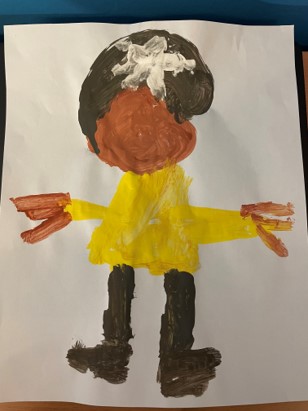OUR VISION FOR EYFS
THE EYFS IS BASED UPON FOUR PRINCIPLES:
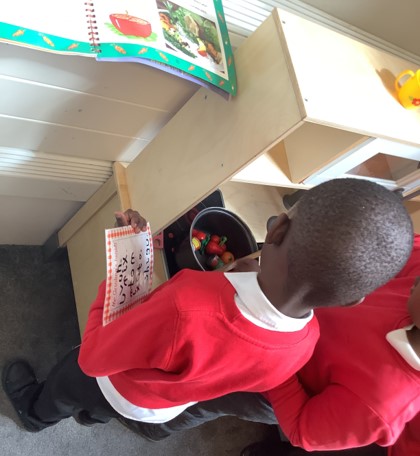
THE CURRICULUM
In FS2 your child will be learning skills, acquiring new knowledge and demonstrating their understanding through 7 interconnected areas of learning and development. Children should mostly develop the 3 prime areas first. These are:
- Communication and language development – This involves giving children opportunities to experience a rich language environment, to develop their confidence and skills in expressing themselves & to speak and listen in a range of situations.
- Personal, social and emotional development – This involves helping children to develop a positive sense of themselves & others, to form positive relationships & develop respect, to develop social skills & learn how to manage their feelings, to understand appropriate behaviour in groups & to have confidence in their own abilities.
- Physical development – This involves providing opportunities for children to be active and interactive as well as develop their co-ordination, control & movement. Children are also helped to understand the importance of physical activity & to make healthy choices in relation to food.
These prime areas are those most essential for your child’s healthy development and future learning. As children grow, the prime areas will help them to develop skills in 4 specific areas. These are:
- Literacy development – This involves encouraging children to link sounds & letters & so begin to read & write. Children are given access to a wide range of reading materials (books, poems &other written materials) in order to ignite their interest.
- Mathematics – This involves providing children with opportunities to develop & improve their skills in counting, understand & use numbers, calculate simple addition & subtraction problems as well as describe shape, space & measures.
- Understanding the world – This involves guiding children to make sense of their physical world & community through opportunities to explore, observe & find out about people, places & the environment.
- Expressive arts and design – This involves enabling children to explore & play with a wide range of media and materials, as well as providing opportunities & encouragement for sharing their thoughts, ideas & feelings through a variety of activities in art, music, movement, dance, role-play, design & technology.
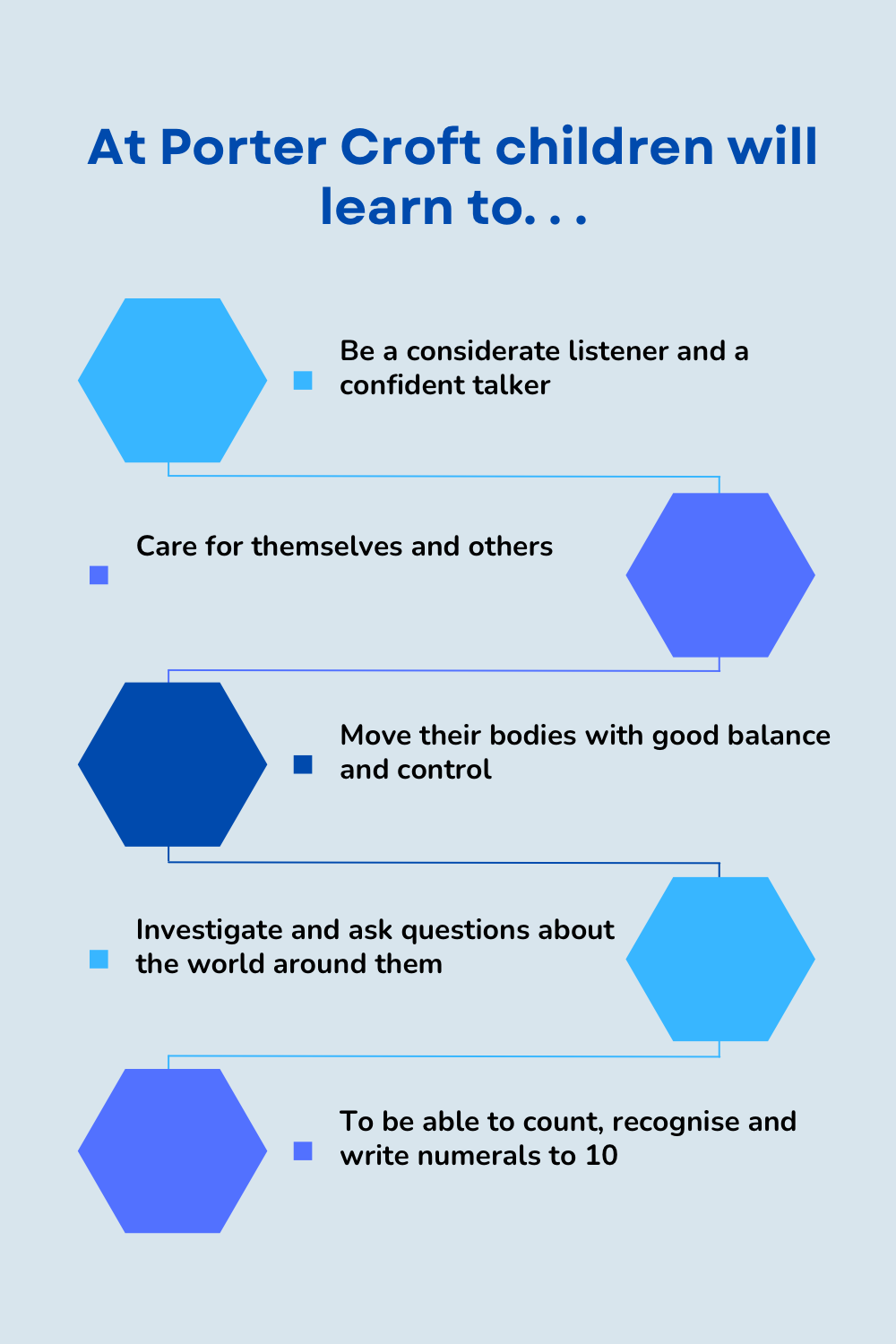
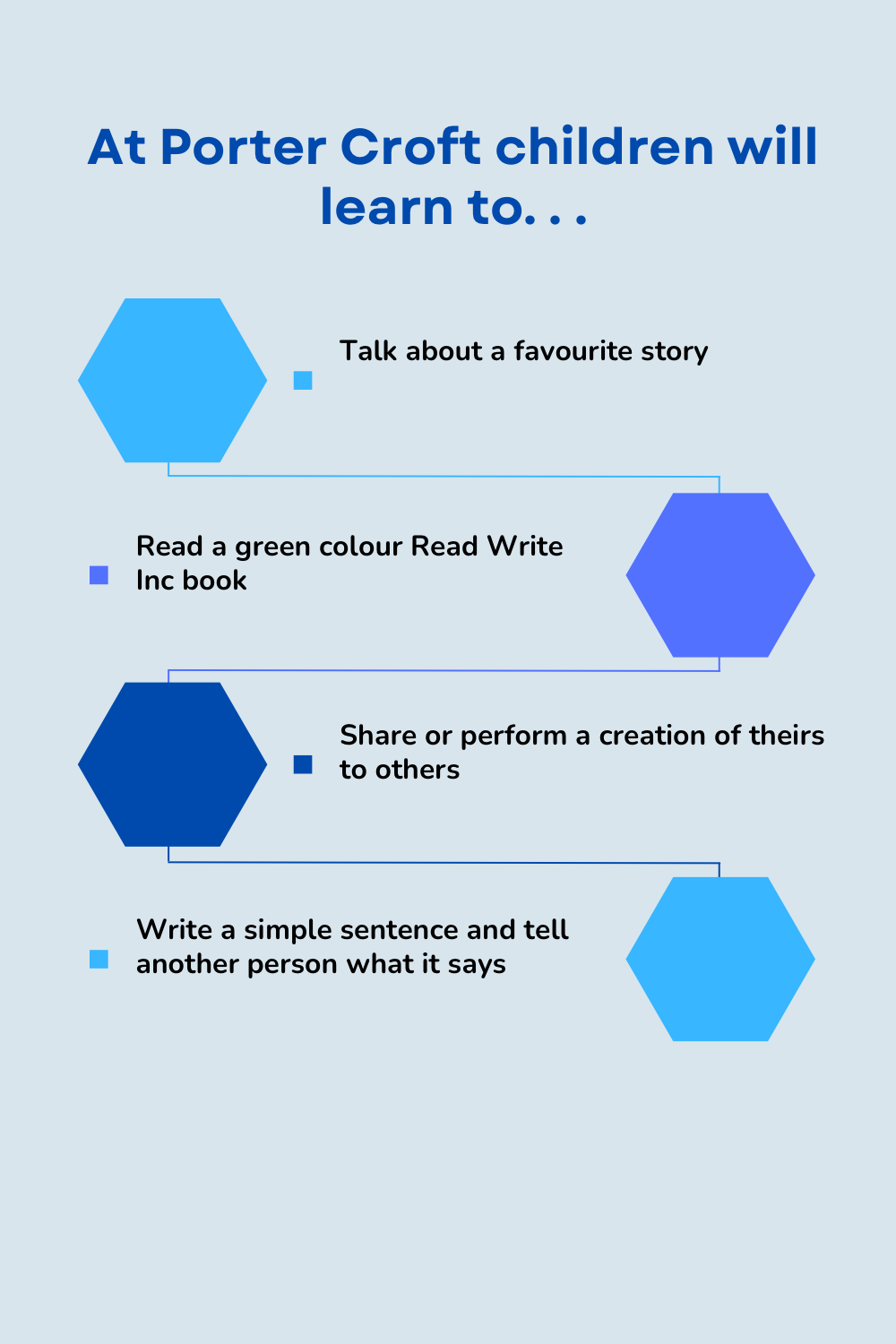

ESTABLISHING AN EFFECTIVE ENVIRONMENT FOR LEARNING AND A CREATIVE CURRICULUM
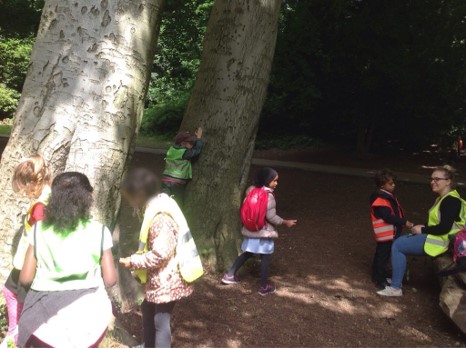
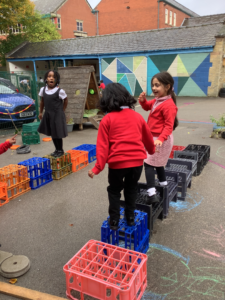
The Emotional Environment- Mood, atmosphere and relationships are the foundations.
At Porter Croft we understand that children are emotional learners and this needs to be planned for so that when a child comes to Porter Croft the environment makes them feel safe and secure.
Transition
- Visiting children and parents in a range of settings (nursery, school)
- All about me information shared with staff prior to starting
- SEND transition meetings/timetables
- Staggering children’s starts
- Photo book sent home prior to starting
- Self-portrait from home visit displayed in classroom
- Nursery children and parents visit the school in summer term to meet the staff, see the classroom and outdoor environment.
- Reading afternoon in FS2 classroom for parents to come into class and sit with their child to read a story.
- Parents are encouraged into the classroom to support transitions in Week 1 of the academic year
Welcome:
- Each child and parent is warmly welcomed at the gate
- Children have a familiar morning routine that motivates them to separate from parents/carers
- Open registration
- Parents are encouraged into the classroom (pre/post-covid and changes)
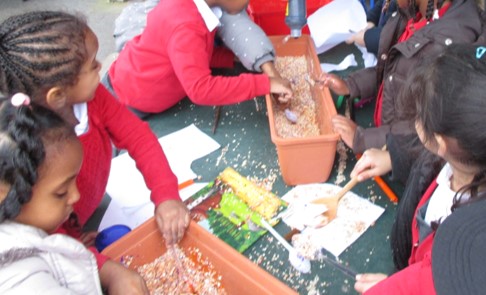
Behaviour:
- Behaviour expectations are clear and consistent
- School values and Christian values
- Children involved in making class rules
- Adults are positive role models
- Encourage children to develop their own conflict resolution skills (zones of regulation)
- Children are involved in making Project Evolve rules
Equality and Diversity:
- Multicultural resources
- Displays that promote positive images of race, culture, ages, abilities and gender
- Supporting children to value aspects of their own lives as well as those of other people</li?
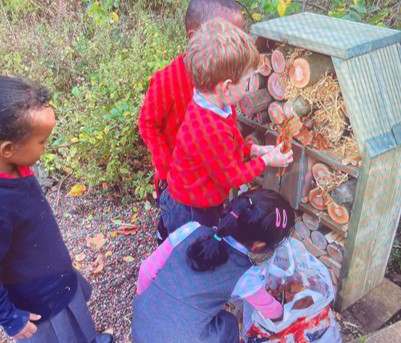

THE INDOOR ENVIRONMENT
There are many ways that we enable the indoor environment to be warm, welcoming and exciting. This is done through our language rich class displays, through the colours and materials used or the posters, photographs, pictures used in the environment; to the levels and softness of fabrics, cushions and rugs . The classroom is organised into clear zones including quiet and messy areas which supports developing schemas and common play behaviours. Throughout the classroom there are different activity areas:
- Home corner/role play – multicultural foods and utensils
- Dolls in a range of skin tones
- Real life objects where possible
- Dressing up clothes which can be used in different ways and multicultural clothing
- Dough enhancements
- Well-sorted modelling resources
- Range of brushes, sponges, printing tools
- Opportunity for children to display independent work – celebrating children’s individual creativity
- Purposes for writing through enhancements/ challenges/ interests
- Seeking opportunities to encourage writing
- Music and dance from a wide range of cultures
- Instruments from across the world
- Experiencing live musical performances
- Open ended materials (costumes/backdrops/props)
- Quiet space with fabrics to soften the noise
- Reading corner with stories that link to the topic, multicultural stories, children’s favourite stories.
- Variety of fiction and non-fiction books (front facing)
- Puppets and props for story telling
- Consideration of different levels of fine motor skills needed when organising construction area
- Small world resources next to construction
THE OUTDOOR ENVIRONMENT
- Outdoors is special and offers a multi-sensory environment that indoors cannot
- Children can move more freely and take risks
- Relationships are different outdoors
- Children need opportunity to work on large scale activities (supporting cooperation, negotiation and collaboration)
- Outdoors is not limited to school grounds
- Timetable offers extended periods of time outside
- Adults model positive attitude to outdoors
- Opportunity to find out about the real world (growing, weather, bug hotel)
- Space, time and permission for children to be noisy and energetic (bikes/stage)
- Resources are suitable for the stage of children and offer sufficient challenge
- Mark making opportunities
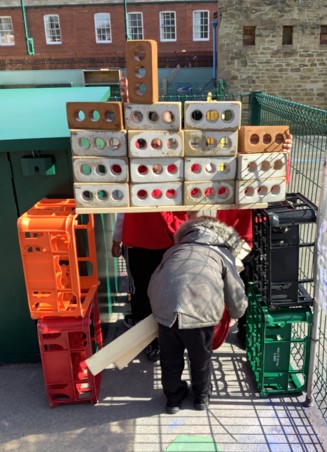
INTENT – EYFS CURRICULUM
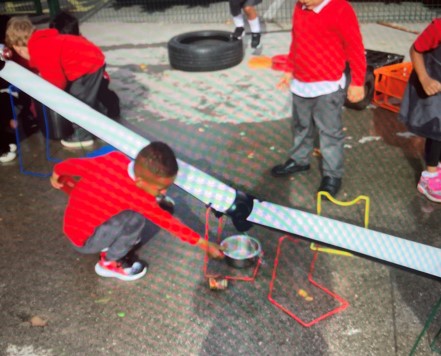
IMPLEMENTATION- EYFS CURRICULUM
Continuous provision which allows the children to learn through play and planned enhancements to support next steps and children’s interests.
A balance of adult-led and child-initiated learning opportunities.
We promote a love of learning through real life experiences and opportunities to build on prior learning.
Carefully planned transition sessions which support a smooth and settled transition into school.
High quality phonics teaching is started as soon as children begin FS2.
A carefully planned diverse and inclusive range of books are used across the curriculum to support learning.
Opportunities for children and families to develop a love of reading.
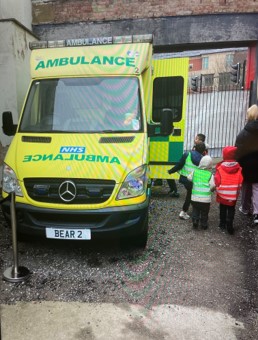
IMPACT- EYFS CURRICULUM
Children demonstrate the characteristics of effective learning and are well prepared for the next stage in their learning.
All children access a balanced and challenging curriculum regardless of their background, needs or abilities.
Children make strong progress from their starting points and are offered a broad curriculum which meets each child’s unique needs.
Children are supported by adults that are well trained and passionate about providing the best education for every child.
The percentage of children achieving GLD reflects good progress made from their baseline assessments in September.
HOW CAN I HELP AT HOME?
